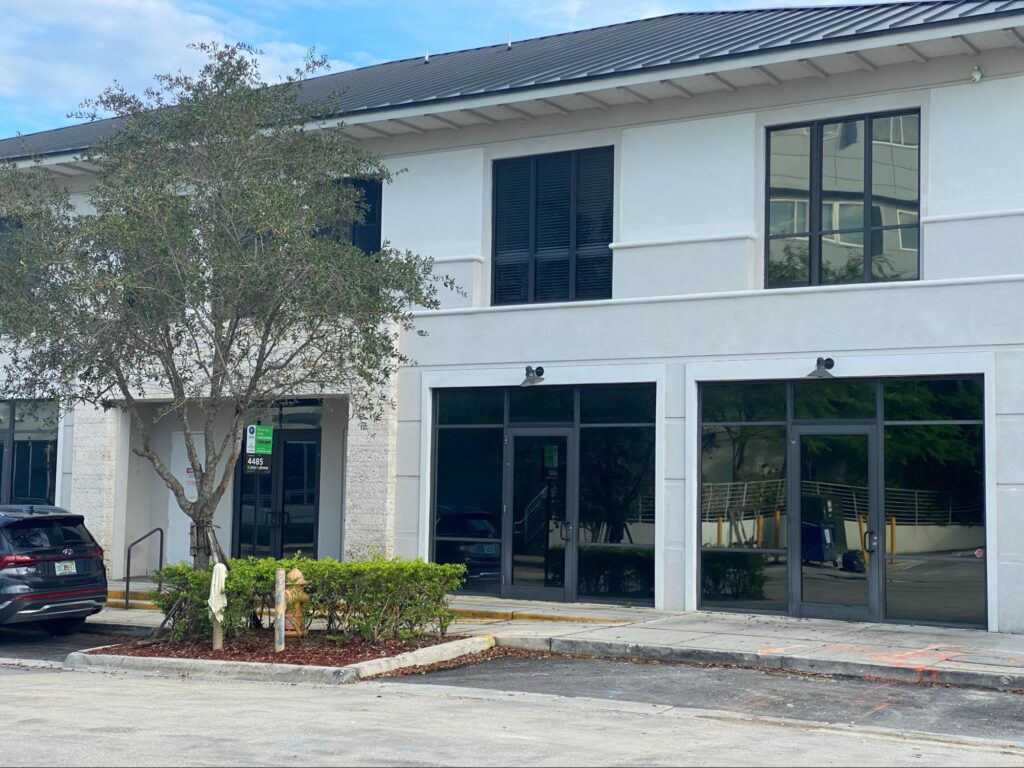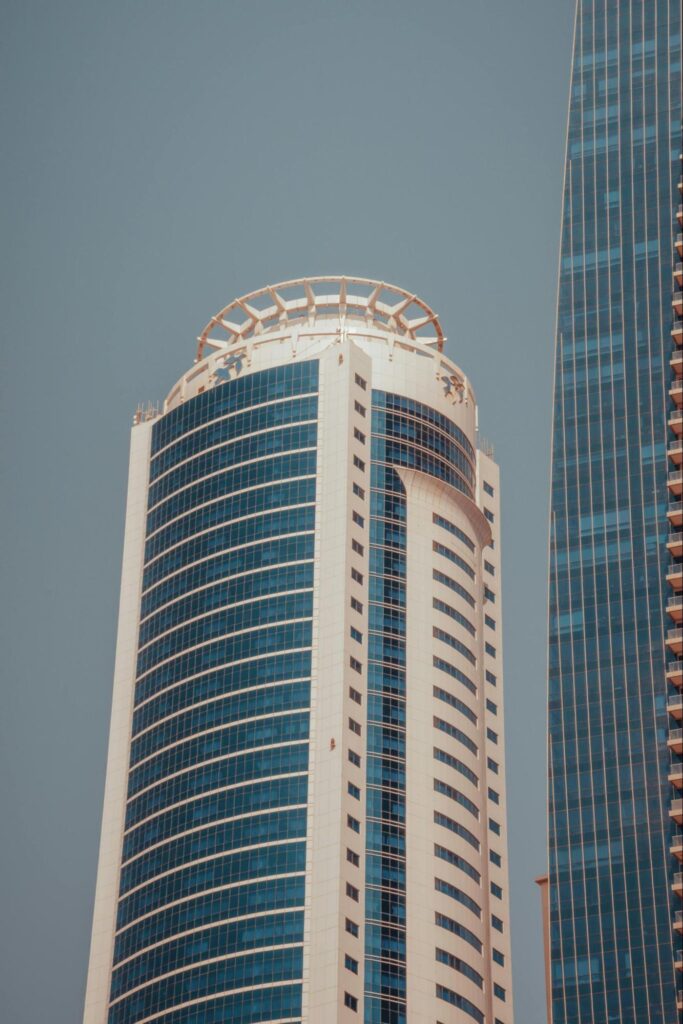Office building window tinting offers a range of benefits that go beyond aesthetics. Let’s explore the importance of window tinting in office buildings, the different types of window tints available, the process of installation, and the cost and return on investment. We will also discuss the legal and regulatory considerations associated with window tinting.
Understanding the Importance of Window Tinting in Office Buildings
Window tinting plays a crucial role in enhancing the comfort and efficiency of office spaces. One of the key benefits is the role it plays in energy efficiency.
The Role of Window Tinting in Energy Efficiency
Window tinting can significantly reduce the heat transfer through windows, especially in areas with high solar exposure. By blocking the sun’s heat, it reduces the reliance on artificial cooling systems, resulting in lower energy costs and a reduced carbon footprint.
Additionally, window tinting can regulate the amount of natural light entering the building. This helps to reduce glare on computer screens and prevents fading of furniture and carpets, subsequently reducing the need for artificial lighting and prolonging the lifespan of interior furnishings.
Another fascinating aspect of window tinting is its ability to contribute to a more sustainable environment. By reducing the energy consumption of a building, window tinting helps lower greenhouse gas emissions, which is crucial in the fight against climate change. This small yet impactful measure in office buildings can have a significant cumulative effect when adopted on a larger scale across various industries.
Privacy and Security: Additional Benefits of Window Tinting
Window tinting also offers additional privacy and security benefits. It can prevent outsiders from peering into the office space, ensuring the privacy of employees and sensitive information. Additionally, some window tints provide shatter resistance, which adds an extra layer of security by holding glass fragments together in the event of accidental breakage or attempted break-ins.
Moreover, window tinting can enhance the aesthetic appeal of office buildings. With various tinting options available, ranging from reflective to frosted finishes, businesses can choose a style that complements their architectural design and branding. This customization not only adds a modern touch to the building’s exterior but also creates a uniform and professional look across all windows, enhancing the overall image of the company.
Different Types of Window Tints for Office Buildings
When it comes to choosing the right window tint for your office building, the options are vast and varied, each catering to different needs and preferences. Understanding the benefits of each type can help you make an informed decision that aligns with your specific requirements.
Solar Control Window Films
Solar control window films are a popular choice for office buildings looking to manage solar heat gain effectively. By blocking harmful UV rays, reducing glare, and controlling temperature fluctuations, these films create a more comfortable working environment for employees. Additionally, they can help lower energy costs by reducing the need for excessive air conditioning during hot summer months.
Decorative Window Films
For businesses looking to add a touch of style and personality to their office space, decorative window films are the perfect solution. Available in a wide range of patterns and designs, these films not only enhance the visual appeal of the building but also provide privacy without compromising natural light. Whether you prefer a frosted finish for meeting rooms or a custom logo design for branding purposes, decorative window films offer endless possibilities for customization.
Safety and Security Window Films
When it comes to protecting your office building against unforeseen events, safety and security window films are a must-have. These specialized films are designed to hold shattered glass together in the event of breakage, reducing the risk of injury from flying shards. Moreover, they act as a deterrent against vandalism and forced entry attempts, providing an added layer of security for your employees and assets. Investing in safety and security window films not only enhances the safety measures of your building but also offers peace of mind knowing that your workplace is well-protected.
The Process of Office Building Window Tinting
Pre-Installation Considerations
Before installing window tints, it’s important to assess the specific needs of the office building. Factors such as the desired level of tint, the type of film, and any local regulations should be taken into account. Consulting with professionals can help determine the most suitable solution.
Additionally, it’s crucial to consider the orientation of the building and the amount of sunlight it receives throughout the day. South-facing windows may require a different level of tint compared to those facing east or west. Understanding the sun’s path can help optimize the effectiveness of the window tinting and improve energy efficiency.
The Installation Process
The installation process is typically carried out by trained technicians. They will clean the windows, apply the film, and ensure a smooth and precise finish. The time required for installation varies depending on the size and complexity of the project.
Moreover, the type of window glass can also impact the installation process. Different glass compositions may require specific adhesive solutions or application techniques to ensure the tint adheres properly and provides the desired level of performance. Experienced installers will consider all these factors to achieve the best results.
Post-Installation Care and Maintenance
Window tints require minimal maintenance. Regular cleaning with non-abrasive materials is usually sufficient to keep them looking their best. It’s important to follow any specific care instructions provided by the manufacturer or installer.
In addition to cleaning, periodic inspections can help identify any issues such as bubbling or peeling early on. Prompt attention to these issues can prevent further damage and ensure the longevity of the window tinting. By staying proactive with maintenance, office buildings can continue to benefit from the advantages of window tinting for years to come.
Evaluating the Cost and ROI of Window Tinting
When considering window tinting for an office building, it’s important to evaluate the cost and potential return on investment. Window tinting offers numerous benefits beyond just aesthetics, including energy efficiency, UV protection, and increased privacy.
Installing window tinting can also enhance the overall comfort of the office environment by reducing glare and regulating temperature. This can lead to improved employee productivity and satisfaction, making it a worthwhile investment for businesses looking to create a more conducive workspace.
Factors Influencing the Cost of Window Tinting
The cost of window tinting depends on factors such as the size of the windows, the type of film selected, and the complexity of the installation. Obtaining quotes from different providers can help in comparing prices and selecting the most cost-effective solution. It’s important to consider the long-term benefits of high-quality window tinting, as cheaper options may require more frequent replacement and maintenance.
Additionally, the location of the office building can impact the cost of window tinting, as areas with extreme weather conditions may require specialized films for optimal performance and durability. Consulting with a professional can help in determining the most suitable window tinting solution based on the specific needs of the office space.
Calculating the Return on Investment
The return on investment for window tinting is primarily achieved through energy savings. By reducing the need for artificial cooling and lighting, businesses can significantly lower their utility bills. The exact calculation will vary based on factors such as local energy costs and the size of the office space. Consulting with a professional can help estimate the potential savings and determine the payback period for the investment.
Furthermore, window tinting can also contribute to the sustainability efforts of a business by reducing its carbon footprint. This environmentally friendly aspect of window tinting can enhance the company’s reputation and appeal to eco-conscious consumers and employees.
Legal and Regulatory Considerations for Window Tinting
Before installing window tints, it’s crucial to understand and comply with local building codes and regulations.
Understanding Local Building Codes and Regulations
Building codes and regulations vary from region to region. It’s important to familiarize oneself with the specific requirements regarding window tinting. This includes factors such as the maximum allowable darkness level and any restrictions on reflective films.
Moreover, some areas have specific regulations on the types of materials that can be used for window tinting. For instance, certain regions may require the use of environmentally friendly or non-toxic materials to promote sustainability and reduce environmental impact. It’s essential to research and adhere to these guidelines to ensure both legal compliance and eco-conscious practices.
Compliance with Energy Efficiency Standards
Window tinting may be subject to energy efficiency standards set by local authorities. Ensuring compliance with these standards is essential to avoid potential penalties or restrictions on building operations.
In addition to energy efficiency standards, some regions also have guidelines related to the thermal performance of window tints. These guidelines aim to regulate the amount of heat that can be blocked or retained by the tinting material. By meeting these standards, buildings can enhance their overall energy efficiency and reduce heating and cooling costs.
Conclusion
Office building window tinting solutions offer numerous benefits, ranging from energy efficiency to privacy and security. Understanding the importance of window tinting and the various types available can help businesses make informed decisions. Evaluating the cost and return on investment, while considering legal and regulatory considerations, ensures a successful window tinting project. By optimizing comfort through window tinting, office buildings can create a more productive and enjoyable work environment for employees.


